|
The Hellenic Genocide
Quotes from historical documents and related Photos. |
|||
CHAPTER XIII: "A colony from Phocea founded Marseilles, France, some thousands of years ago. It is interesting to know that the massacre and expulsion of the inhabitants in June, 1914, excited special interest and sympathy in the modern French city." CHAPTER XIII: "At the time of its destruction it is probable that the inhabitants exceeded five hundred thousand in numbers. The latest official statistics give the figure as four hundred thousand, of whom one hundred and sixty-five thousand were Turks, one hundred and fifty thousand Greeks, twenty-five thousand Jews, twenty-five thousand Armenians, and twenty thousand foreigners: ten thousand Italians, three thousand French, two thousand British and three hundred Americans." CHAPTER XIII: "The city was divided largely into quarters, though this was not a rigid arrangement. The Turkish lay to the east and south, and, as is usual in all mixed Ottoman towns, occupied the highest part, extending up the sides of Mount Pagus, (and does still, for that matter, as it was not burned)." CHAPTER XIII: "The civilization of this ancient and beautiful city was essentially Greek. The great mills of Nazli, which before the war supplied an excellent quality of flour not only to Smyrna vilayet, but to the rest of Turkey and even exported to Europe, were founded by a Greek. Of the three hundred and ninety-one factories at Smyrna, three hundred and forty-four were Greek and fourteen Turkish. Statistics of this nature could be multiplied indefinitely." CHAPTER XIII: "The question is often asked: "When will the Turks rebuild Smyrna!" Turkish Smyrna was not burned." CHAPTER XIV: "THE last act in the fearful drama of the extermination of Christianity in the Byzantine Empire was the burning of Smyrna by the troops of Mustapha Khemal. The murder of the Armenian race had been practically consummated during the years 1915-1916, and the prosperous and populous Greek colonies, with the exception of Smyrna itself, had been ferociously destroyed. " CHAPTER XIV: "Also, Sir Valentine Chirol, Harris Foundation lecturer at the University of Chicago in 1924, made this statement ("The Occident and the Orient", page 58): "After the Turks had smashed the Greek armies they turned the essentially Greek city (Smyrna) into an ash heap as proof of their victory."" CHAPTER XIV: "The destruction of Smyrna happened, however, in 1922, and no act ever perpetrated by the Turkish race in all its bloodstained history, has been characterized by more brutal and lustful features, nor more productive of the worst forms of human sufferings inflicted on the defenseless and unarmed. It was a fittingly lurid and Satanic finale to the whole dreadful tragedy. The uncertainty which at one time existed in the public mind as to the question, "Who burned Smyrna?", seems to be pretty well dispelled. All statements that tend to throw doubt on the matter can be traced to suspicious and interested sources. The careful and impartial historian, William Stearns Davis, to whom reference has already been made in this work, says ("A short History of the Near East", page 393): "The Turks drove straight onward to Smyrna, which they took (September 9, 1922) and then burned." Men of this stamp do not make assertions without having first gone carefully into the evidence." CHAPTER XIV: "We have already seen by what methods the Greeks had been eliminated from the coastal region of Asia Minor. The murders and deportations have been described by which a flourishing and rapidly growing civilization had been destroyed, villages and farmhouses wrecked and vineyards uprooted. Large numbers of Greeks, however, who had managed to escape by sea, returned to their ruined homes after the landing of the Hellenic army in May of 1919, and set to work industriously to restore their ruined properties. Mustapha Khemal now determined to make a complete and irretrievable ruin of Christianity in Asia Minor. Carthago delenda est. The plan, revealed by its execution, was to give the city up for some days to lust and carnage; to butcher the Armenians, a task which has always given a special pleasure to the Turk; to burn the town and to carry the Greek men away into captivity." The Hellenic Genocide Quotes from historical documents and related Photos. Previous page | Initial page | Site Map | Next page (20th of 29) |
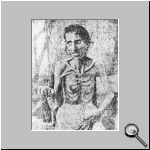
Armenian woman victim of forced starvation.
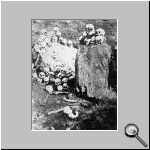
Piles of skulls of massacred Christians.
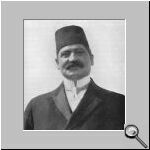
Talaat Pasha, ex-Grand Vizier of Turkey.
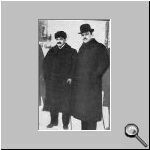
Talaat Pasha, and Richard von Kühlmann, German negotiator.
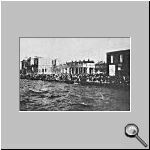
People trapped between the fire and the sea in Smyrna.
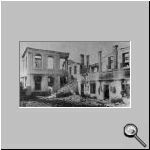
The ruins of the Aidinion Hospital.
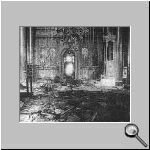
Destruction in a Monastery.
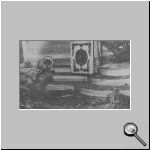
Destroyed Church of Evangelistrias.
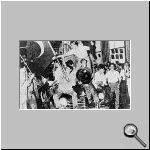
The Turks celebrate the pogrom of 1955.
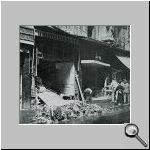
The destruction resembles a war zone.